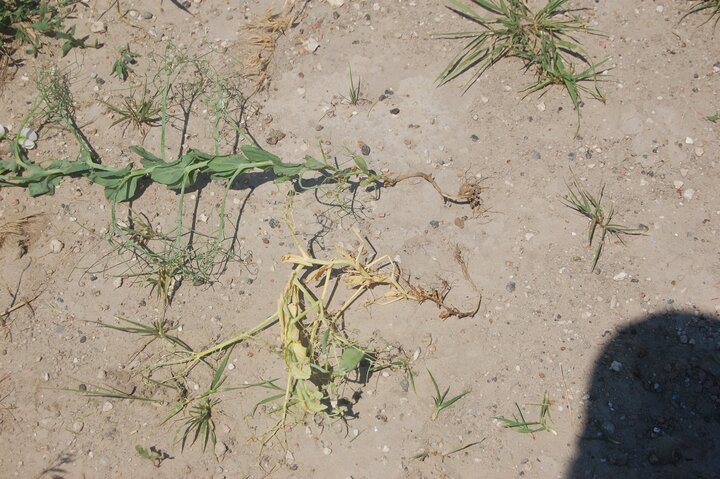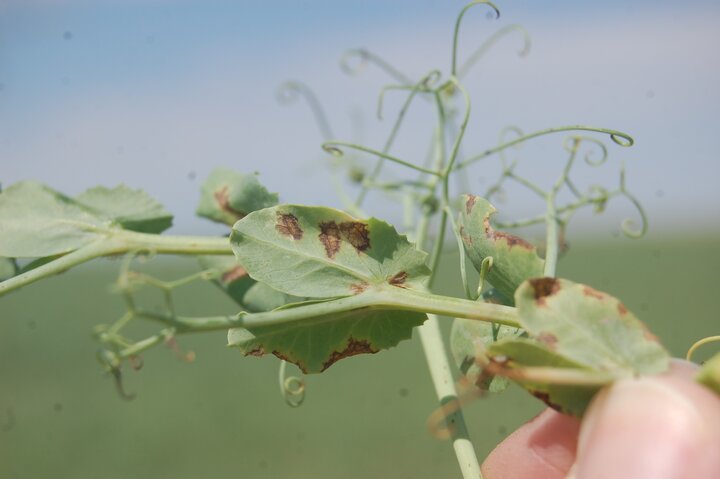Progress Report on Nebraska Dry Pea Disease Survey
July 24, 2015



The last two years (2013-2014) have seen an increased interest in growing dry yellow peas in Nebraska and other states in the Central High Plains. Approximately 30,000 acres of dry yellow field peas were grown in 2013 with almost double that number in 2014.
The increased interest in growing dry peas is largely due to it being a short-season crop with a relatively low water requirement, a benefit to those growers facing severe water restrictions or limited water resources. Field peas should also fit well with the dry bean equipment and crop rotation systems presently used in this area.Dry peas also offer other benefits. South Dakota research have found yield increases in dryland wheat following the pea crop.
In 2015 the increased acreage also increased the possibility of new and unknown diseases in the crop. We have been conducting a comprehensive disease survey across the state in an effort to identify the most prevalent and important disease issues in Nebraska dry pea production. It is critical that we establish the predominant disease issues so personnel can become familiar with them and learn management techniques.We have now surveyed and collected 90-100 samples from more than two dozen fields across the state. These fields represent most counties in western Nebraska that grow peas, including Sheridan, Box Butte, Morrill, Keith, Garden, Deuel, Cheyenne, Kimball, Banner, Lincoln, Custer, and Scotts Bluff. The primary problem consistently observed across the region is a bacterial blight caused by two species of Pseudomonas:
- P. syringae pv. Pisi and
- P. syringae pv. syringae, the causal agent of the brown spot of beans that is more familiar to many area producers and consultants.
We will be continuing to work with any interested growers or consultants in surveying fields and collecting samples for identification. Please contact Bob Harveson, (308) 631-5953 (cell), Tony Adesemoye at (308) 696-6708, or Kathy Nielsen at (308) 632-1286 with questions or comments.
Robert M. HarvesonExtension Plant Pathologist, Panhandle REC
Anthony Adesemoye
Extension Plant Pathologist, West Central REC
